The Magic of Classroom Libraries
Sep 06, 2024
The best words I ever heard inside my classroom were: “Miss! I think you turned me into a reader!”
I know my goal as an English teacher was supposed to be to help students develop the knowledge and skills laid out in the state standards, but let’s be honest here. I wanted to convert every student that walked through my door into a reader. I wanted them to love reading as much as I do, to become irrevocably obsessed with the lives of fictional characters, to be a devastated crying mess on the floor because of the evil whims of an author…
Ok, that got away from me.
I wanted them to read.
My favorite teacher t-shirt that I loved to wear on teacher jeans days was a plain gray shirt with huge white letters that read: “I JUST WANT YOU TO READ A BOOK.” (Yes, I still have it. Yes, I still wear it. Yes, I still just want you to read a book.)
When I made the difficult decision to leave my K-12 classroom, the hardest part was saying goodbye to the extensive library I’d collected over the years. After claiming empty shelves from other teachers and buying more on my own, I had hundreds of books lining the walls of my classroom, maybe thousands. If I’d had good classroom library management software back then, I’d be able to tell you exactly how many I had, but alas.
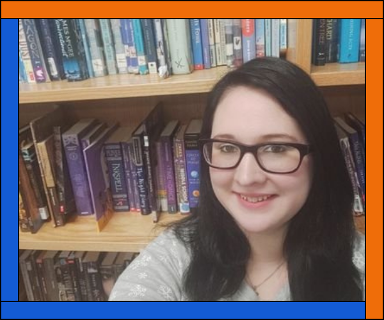
Many of the books came from my own childhood shelves and many I bought myself. Many others had been donated over the years, mostly by my incredible grandfather who loved trolling library book sales for good sales. I even had a collection of signed books from the year that NCTE was here in Houston.
I considered bringing the collection home with me, and I did save several titles that were personally valuable, but I knew that those books needed to remain available to students, so I left them for the next teacher. I choose to believe that they’re still finding their way into students’ hearts. (Besides, my home library is already overflowing off the shelves!)
So many different students benefit from learning in a book-filled classroom. Ok, really, all students benefit from learning in a book-filled classroom, but let’s get specific.
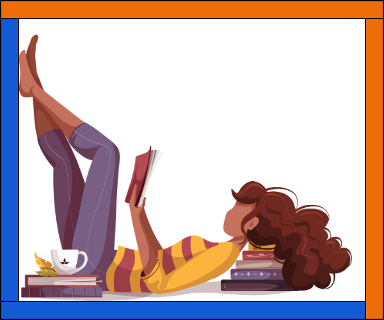
Students Who Love Reading… and Students Who are Reluctant Readers
I know this is obvious, but let’s not overlook our delightful bookworms just because they don’t need to be convinced that reading is cool (it is, they know). They’ve read the popular series: Harry Potter, Divergent, Hunger Games, Uglies, and so on. And they will be absolutely appalled if you haven’t. (Yeah, I admit it, I didn’t read the Harry Potter series until my sixth year of teaching, a fact my students hated.)
The downside to being the student who devours every book in the library is that eventually the library runs out of books. This is where classroom libraries come in. Classroom libraries are stocked full of popular books, obscure books, books kids are reading now, books kids ask for, and books that impacted the teacher when they were a kid. Odds are, bookworms will uncover a new obsession in those shelves. It was always one of my more minor personal goals to trap a student into loving the Dragonriders of Pern series by Anne McCaffrey or The Hitchhiker’s Guide to the Galaxy by Douglas Adams. (Ok, yes, it’s still my goal and that is why I name-dropped these two in particular so that you, my enthralled reader, will go look them up, read them, love them, and send me an email saying “Oh my gosh golly, you were right!)
Of course, for every student who loves reading, there’s one who thinks they hate reading.
I know it’s cheesy, but I firmly believe that there is a book out there for everyone. According to a non-fact-checked Google search, a million books are published in the U.S. every year. (Actually, here’s a really interesting article about trying to count how many books are in the world.) So honestly, the odds that a person would find nothing interesting in any published book seem pretty slim to me. Again, not doing a statistical analysis here.
For me, Ghost by Jason Reynolds was a huge Reluctant Readers Trap, especially when we listened to the audiobook (with the Kindle Whispersync up on the projector) together as a class. My trick for catching reluctant readers? Stop reading on minor cliffhangers. Maniacal laughing as they say “Miss, no! One more chapter!” is optional.
Classroom Library Tip #1
Keep an eclectic mixture of books! I always had plenty of overlap with what the school library had – especially when it came to books that were popular or commonly requested. I wanted to be a backup if books were already checked out from the library. But I (and my grandfather!) also made sure my shelves had variety, so all students could find something new that they might not have found elsewhere, hoping that it might spark a new bit of excitement for reading.

Students Who Want to Make Connections
“Miss, what’s your favorite book?”
So many students over the years wanted to read the books that I had read. They didn’t always care so much about the book or what it was really about. They wanted to make a connection. They wanted to have something to talk to me about in the hall between classes.
Whenever I did Book Talks for my middle schoolers, I almost always started with Fever 1793 by Laurie Halse Anderson. I think she’s more well known for Speak, which is admittedly a great book, but I first met her and fell in love in Fever 1793. I’m not sure why this one hit me so hard as a kid, but I absolutely adored it. I read it so many times that the pages literally fell out, and I had to buy a new copy. And when I told my students that, they wanted to read it too.
One of my most treasured teaching memories was when the eighth grade English teachers implemented a during-the-day book club, and I ended up with a classroom full of boys because I was the one reading The Hobbit. I read the first chapter to them the way that my fifth grade English teacher read Tales of a Fourth Grade Nothing by Judy Blume to us (special shoutout to Mrs. Bestic!), and I mean with voice acting that would make Andy Serkis proud. This group of rowdy eighth-graders were enthralled and suddenly they all wanted to talk to me about hobbits at lunch.
Classroom Library Tip #2
Keep some personally relevant titles! We know that relationships are a massively important aspect of teaching. Talking about the books that impacted you, especially when you were their age, is one of the best ways (in my opinion) to build bridges with students. Especially for students who don’t quite know what they like to read yet, your personal recommendations can give them a way into reading that doesn’t involve the overwhelming choice of looking at a whole library.
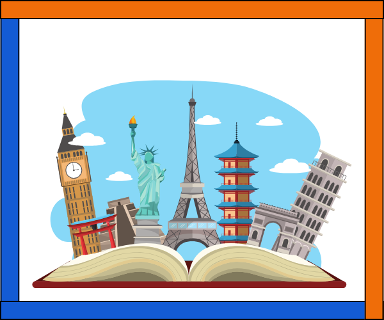
Students Who are Learning English as a Second Language
Reading is so important for all students, but it can be even more important to students who are learning English. One of the best ways to help them become fluent is through reading a lot. But these students can often fall into the reluctant readers category just because it may still be difficult for them to read in English. I’ve taught plenty of wonderful ESL students who were more than happy to read in their native language but avoided reading in English.
I certainly wasn’t reading the original Don Quixote in my high school Spanish class. Students who are new to the language might not be ready for books at their grade level. Keeping a well-stocked library with books of different reading levels and even different lengths can open doors for these students.
Another great way to pull in ESL readers is to help them find books in English but about their home culture. This is where it’s important to know your students and the demographics of your school, so you can find books that give them a relatable entry to reading in English. For example, books like The House on Mango Street by Sandra Cisneros could give some students a connection to their culture through easy-to-digest vignettes.
And let’s not forget about graphic novels! Graphic novels are hugely beneficial for English learners because the detailed images give them context clues to help them decipher the language. They might not be ready for Fever 1793, but the graphic novel Anya’s Ghost by Vera Brosgol might be just the thing they need.
Classroom Library Tip #3
Stock books from a variety of cultures at a variety of levels in a variety of styles! Variety is truly the spice of life. A classroom library should be stocked with as many short stories and graphic novels as full-length chapter books. Fill your shelves with stories from the cultures of the students in your school.
While this is a great benefit for ESL students, it really helps all students. Which actually leads me right into our final group of students.
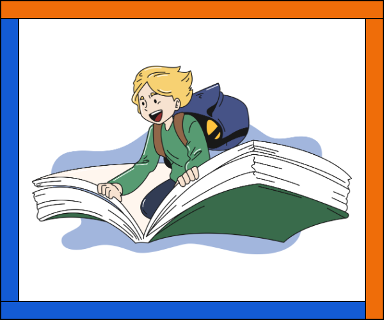
Students Who Need Mirrors and Windows
I honestly believe this is the most important consideration because it truly applies to every single student.
Students who are looking for mirrors just want to see themselves in the books they read. They want to read about characters who look like them, who have gone through similar experiences, who they can relate to.
Mirrors might not always be obvious. At face value, I didn’t share much in common with Mattie Cook in Fever 1793. I didn’t know what it was like to grow up in the late 1700s (I grew up in the late 1900s), my family didn’t own and run a coffeehouse, I didn’t lose a best friend at a young age, I didn’t experience a deadly epidemic as a teenager. But there was still a lot of myself that I saw in young Mattie. I was a snarky young girl who wanted to be seen as an independent adult.
Sometimes mirrors help students see who they want to be. I don’t have a lot in common with Lessa in Dragonflight by Anne McCaffrey, but I do wish I had a dragon of my own. Sometimes students want to imagine they’re the strong, powerful superhero protagonist that I know they can be.
As important as it is for our students to see themselves in the books they read, it’s also important that these books serve as windows into worlds our students can’t experience for themselves. Books are the most amazing windows because they don’t just tell students about other worlds, they drop them directly into those worlds through the thoughts and voices of the characters.
Neil Gaiman put it best in his introduction to Fahrenheit 451: “And fiction gives us empathy: it puts us inside the minds of other people, gives us the gift of seeing the world through their eyes. Fiction is a lie that tells us true things, over and over.”
Classroom Library Tip #4
Offer shelves full of mirrors and windows! Books about LGBTQ+ characters. Books with female main characters, male main characters, non-binary main characters. Books about characters with disabilities. Books about characters from other countries learning how to survive in America. Books about characters learning how to survive in other countries. Books about love. Books about death. Books about life. Books about everything.
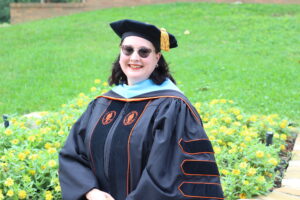
Dr. Waneta Hebert is an accomplished instructional designer and educator with over 10 years of experience in K-12 and higher education. Waneta started her career as a public high school English teacher, where she discovered her passion for helping students learn. She has since transitioned to instructional design and curriculum development. With a unique perspective gained from being a teacher, designer, and lifelong learner, Waneta is an expert in applying evidence-based course design and educational technology to create engaging learning experiences across modalities.
Related Resources
Introducing IT Asset Manager: Built for IT, Backed by Follett Software
IT leaders are done with rigid tools that don’t reflect how schools actually operate. That’s why Follett Software created IT Asset Manager: a solution designed in partnership with real school IT teams to help you do more with less. Join Jason Schoenleber to get a first look at this purpose-built tool for districts managing 1:1 programs, […]
Digital Citizenship in Action: Preparing Students for a Connected World
In today’s digital age, being a good citizen means more than participating in local communities – it extends into the online world. Digital citizenship is crucial for enabling students to learn how to navigate technology responsibly, safely, and positively. This webinar explores practical strategies for integrating digital citizenship into school culture, from building lessons into […]
IT Ops 2.0: Rebuilding the Systems That Power K-12 Technology
After years of reacting to tech demands, districts are stepping back to rethink how IT systems support long-term sustainability, security, and efficiency. This panel explores what high-functioning technology teams are doing to simplify their ecosystems, reduce risk, and position themselves for scale – without adding head count or complexity. We’ll explore: You’ll leave with frameworks […]

